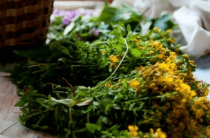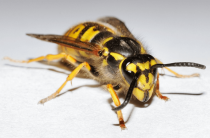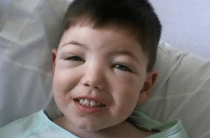Quincke's edema is usually called an acute allergic reaction, which is expressed in swelling of the subcutaneous tissue, mucous membranes, soft facial tissues and other parts of the summer. Edema is characterized by its rapid onset and development. Literally in a matter of minutes, a person is difficult to recognize. But it poses a particular danger to the child's body. It is children who are most vulnerable to any type of allergy and its manifestations. Therefore, all parents need to be extremely attentive to changes in the body and the health of the child.
Causes and forms of angioedema in children
In order to protect your baby from such a terrible manifestation, you need to know all the possible causes of its occurrence. In the first place, you can put the factor of hereditary predisposition to allergies. This is followed by weak immunity due to disorders in the liver and other organs. Depending on the causes, some forms of Quincke's edema can be distinguished.
Non-allergic angioedema
This form of edema is quite severe, since it does not have a specific cause, and it is rather problematic to find it out. This is due to the presence of pathologies in the child at the genetic level. Provocateurs can be:
- Any kind of allergies;
- Viral and infectious diseases;
- Impact on the body of toxic substances;
- Cold, heat, climate change;
- Stress, disorders of the nervous system.
This type is quite rare, and its treatment takes a very long time.
Allergic angioedema
This type of reaction is the most common. When the child's body interacts with the allergen, chemicals are released from the cells, which increases the permeability of capillaries and provokes swelling of the skin, tissues and organs. The culprits are:
- Food (fish, meat, eggs, milk, chocolate, bakery products, fruits and many others);
- house dust and plant pollen;
- Bites of mosquitoes and other insects;
- Medications (antibiotics, drugs for the cardiovascular system, hormone therapy, vitamins, aspirin, iodine-based drugs);
- Animals;
- Any other allergens.
In children, as a rule, already from birth there are manifestations of such allergens. Therefore, it is necessary to detect them in time and treat them in order to prevent the appearance of Quincke's edema.
Recurrent angioedema
This is a form of edema that, when it is eliminated, after a while, reappears at the slightest contact with the allergen. The following conditions contribute to its development:
- Problems in the thyroid gland;
- autoimmune diseases;
- The presence of parasites in the body;
- liver dysfunction;
- Chronic inflammatory processes in the body of a child.
If the allergen and cause were not established during the diagnosis, then Quincke's edema will periodically manifest itself, and the elimination of symptoms will not save the child from the disease.
Symptoms of the disease
Angioedema appears in children in various places and on different parts of the body, in the form of blisters and red spots of a rather large size. In their structure, they are quite homogeneous. If the subcutaneous tissue is affected, then the following localization sites are most likely:
|
|
If the oral cavity is affected, the child experiences difficulty in speaking, pain when swallowing. This type of edema is characterized by the absence of itching, tissue tension. It develops in just 10 minutes and can last for three days.
For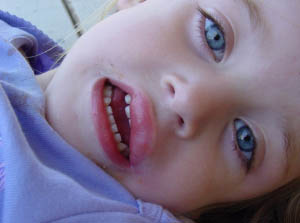 damage to the larynx, instantaneous development is characteristic. Children experience lack of air, begins to panic. Often there is a blueness of the face and the voice may disappear. Parents often confuse such manifestations with bronchial asthma. Possible manifestations of allergic rhinitis. This species is one of the most dangerous, as it often leads to death by asphyxia.
damage to the larynx, instantaneous development is characteristic. Children experience lack of air, begins to panic. Often there is a blueness of the face and the voice may disappear. Parents often confuse such manifestations with bronchial asthma. Possible manifestations of allergic rhinitis. This species is one of the most dangerous, as it often leads to death by asphyxia.
When the internal organs are damaged, the mucous membrane of the stomach and intestines suffers. A characteristic feature is considered to be sharp pains in the abdomen and frequent vomiting of the child. Also, parents can observe diarrhea mixed with blood. Such agnoedema leads to gastritis and stomach ulcers. In medicine, there are cases of cerebral edema. This leads to violations of its shell, epileptic seizures. Such children suffer from visual impairment, immobility of the limbs, speech disorders and muscle atrophy. Rarely, urinary retention, tachycardia, joint damage can be found. For a non-allergic form, damage to the larynx and internal organs is characteristic.
How to treat swelling in children?
The approach to the treatment of edema is determined by its specific type and form. Therefore, first you need to consult a doctor to identify them. After that, with an allergic form of Quincke's edema, antihistamines, corticosteroids and diuretics will be prescribed. The essence of antihistamines is to block the production of histamine by mast cells. There are three generations. The fourth is currently being actively developed. Each subsequent such generation is considered an improved means of the previous one. For the treatment of a disease such as Quincke's edema in children, the following are used:
| Zetrinal | It is prescribed at the first allergic manifestations, as well as at the initial stage of Quincke's edema in children. If the dosage is observed, no adverse reactions occur. Children are mainly used from the age of two. |
| Letizen | It is better to use the drug before bedtime, as it can provoke drowsiness. Fights chronic urticaria and acute manifestations of Quincke's edema. Not recommended for children under six years of age. |
| Telfast | The tool is used for allergic reactions of various types. In the treatment of agnoedema, it is effective at its initial stage. May cause headaches, dizziness and nausea. Also, like the previous drug, it is allowed from the age of six. |
| Fenistil drops | The drug is suitable for use by children from the age of one month. Eliminates skin manifestations of the disease in babies, helps relieve Quincke's edema in children. It is taken orally in the indicated dosage. |
| Ketotifen | It is used both for the treatment and for the prevention of allergic reactions. After use, children experience a significant improvement in their health, urticaria disappears and swelling decreases with agnoedema. Contraindicated in children under three years of age. |
| Suprastin | The safest remedy for children from one month. Relieves itching, burning, hives and swelling of the skin. Eliminates manifestations of allergies from the respiratory system. |
| Tavegil | The drug is easily tolerated by children from one year. Gently affects and does not affect the nervous system of the child. Removes urticaria of any origin. Often doctors prescribe this remedy to relieve Quincke's edema in children and adults. |
In acute forms of agnoedema, doctors recommend the use of systemic corticosteroids (hormonal drugs). Their action occurs instantly, very effective in emergency situations that threaten the life of the baby. They are used only as directed by a doctor, since if the dosage is not correct, they can cause hormonal disturbances, the work of the adrenal glands and the functions of the endocrine system. These include:
- Prednisolone (tablets);
- Dexamethasone (solution for injection);
- Hydrocortisone (ointment, ampoules for internal use).
It is important at the first manifestations of the disease to give the child diuretic drugs that will enhance the excretion of fluid from the body and subcutaneous tissue. Depending on the problem, diuretics are of the following types:
- Osmotic. Such drugs are prescribed to reduce intracranial pressure and cerebral edema. Approved for use in the initial symptoms of renal failure.
- Loopback. They are used for puffiness against the background of heart, liver and kidney diseases. The effect comes quickly, but does not last long. Eliminate swelling of the brain and lungs.
- Thiazide. Used for puffiness of any nature and origin.
- Potassium-sparing.
With Quincke's edema in children, Diacarb, Lasix and Furosemide are often used. The first drug is allowed for children from three years of age with any puffiness. But use is prohibited if the child suffers from liver or kidney disease. Lasix is considered the most versatile, as it has practically no contraindications for use. But do not neglect the advice of a doctor, as soon as he will prescribe the right dosage for your child. If the prescribed portions of consumption are not observed, the situation may worsen. As for Furosemide, the drug is intended to relieve puffiness of various origins. Effective in Quincke's edema.
If the edema is recurrent, chronic infections should be eliminated. It will not be superfluous to clean the biliary tract and the entire digestive system. Fresh plasma is administered for hereditary edema. If a child has agnoedema of the larynx, be sure to use special inhalers and oxygen therapy.
ethnoscience
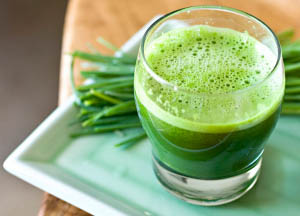 Sometimes, Quincke's edema can be recognized by previous signs. These include rash and itching on the body. In this case, it is necessary to give the child an infusion of peony flowers. You need to take it several times a day, one spoonful. This will help prevent swelling. Water with lemon balm helps a lot. Soak your baby with it three times a day. The next collection has diuretic properties and will quickly remove fluid from the body. It includes rose hips, horsetail, corn stigmas, St. John's wort, dandelion and centaury. Ten grams of this mixture is poured with boiling water for 15 minutes. It is better to put in a water bath. Add a small amount of water and you can take 70 grams after each meal.
Sometimes, Quincke's edema can be recognized by previous signs. These include rash and itching on the body. In this case, it is necessary to give the child an infusion of peony flowers. You need to take it several times a day, one spoonful. This will help prevent swelling. Water with lemon balm helps a lot. Soak your baby with it three times a day. The next collection has diuretic properties and will quickly remove fluid from the body. It includes rose hips, horsetail, corn stigmas, St. John's wort, dandelion and centaury. Ten grams of this mixture is poured with boiling water for 15 minutes. It is better to put in a water bath. Add a small amount of water and you can take 70 grams after each meal.
An excellent remedy for removing agnoedema is chamomile and nettle. These preparations are brewed like a simple tea and taken several times a day. Nettle provokes the rapid excretion of fluid, relieves other allergic manifestations. And chamomile will soothe the skin and nervous system of your child. You can prepare the following mixture: birch buds, cranberries, juniper berries. Be sure to drink freshly brewed, insisting it for 15 minutes.
Do not interfere with the use of juices, which include natural natural diuretics. We invite you to take a look at the following:
|
|
|
All these products are consumed in the form of juice in any combination. Let your child eat fresh meals using them. They are not just diuretics, but also the main sources of vitamins that contribute to the formation of the immune system.
First aid
The provision of first aid plays a vital role. It will help prevent it from spreading to your baby's other organs. To do this, follow the following rules:
- Call an ambulance;
- Determine the product, the object of the allergen and stop the child's contact with it;
- Lay the child on a flat surface, bend his knees;
- Apply a cold compress to the swelling site;
- Give the baby a large amount of pure mineral non-carbonated water to drink (you can dilute baking soda);
- Let him drink any of the sorbents;
- Give an antihistamine;
- If the condition does not improve, and there are still no doctors, give the child intramuscularly Prednisolone.
